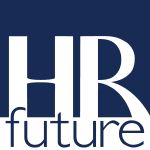In a world defined by rapid digital transformation, evolving workforce expectations, and a growing emphasis on diversity and flexibility, recruitment in 2025 has become more strategic and competitive than ever. Top talent is no longer just seeking a job — they’re seeking purpose, growth, and alignment with values. To succeed in this new landscape, organizations must reimagine their recruitment strategies with a blend of technology, personalization, and authenticity.
Understanding the 2025 Talent Landscape
The dynamics of the job market have dramatically shifted. Hybrid and remote work models are now standard rather than optional. Workers, particularly those from Gen Z and younger millennial cohorts, prioritize flexibility, mission-driven cultures, and mental wellness benefits. Additionally, with companies sourcing talent globally, recruiters face more competition but also have broader reach. These changes demand a more nuanced and data-informed approach to sourcing, engaging, and retaining talent.
Building a Strong Employer Brand
In a talent-first economy, employer branding is a core competitive asset. Candidates want to work for organizations that stand for something meaningful. In 2025, transparency, authenticity, and culture storytelling are essential. Companies are investing in social media content that highlights real employee stories, celebrating diversity and inclusion, and sharing behind-the-scenes glimpses of everyday work life.
Platforms like Glassdoor, Comparably, and LinkedIn continue to influence candidate perceptions. A strong Employer Value Proposition (EVP) — clearly communicating what your company offers in return for a candidate’s skills — is a must-have in attracting attention in a crowded job market.
Leveraging Technology and Tools for Smarter Hiring
In today’s fast-paced recruitment environment, tools are not just helpful — they are essential. Companies use technology to streamline hiring while delivering a more personalized and efficient candidate experience.
Applicant Tracking Systems (ATS) like Greenhouse, Lever, and Workable help manage candidate pipelines and simplify collaboration between hiring teams. Platforms such as HireVue and Pymetrics introduce AI-driven assessments and video interviews that reduce screening time and improve candidate-job fit.
Tools like SeekOut and Eightfold.ai support diverse sourcing strategies, while Linkee.ai helps automate personalized outreach to passive candidates. Meanwhile, Textio ensures job descriptions are inclusive and effective. Integrations with workplace tools like Slack and Microsoft Teams enable real-time decision-making across departments.
Real-life Tool: Qureos (Freemium)
Qureos is an AI-powered recruitment platform that streamlines the hiring process with tools for resume screening, job matching, and automated candidate engagement. It uses advanced AI algorithms to rank resumes based on job descriptions and ensures better candidate alignment through job matching features.
The platform also offers automated outreach and AI-driven video assessments, improving efficiency and reducing manual effort for recruiters. With real-time analytics, Qureos helps optimize the hiring process and make data-driven decisions.
Key Features of Qureos:
- Talent sourcing
- Applicant tracking
- Talent insights
- Talent screening
Pricing:
Qureos offers a freemium plan with access to core AI features. Paid plans provide more advanced tools for recruiters seeking additional capabilities.
Personalized Candidate Experiences
Generic messages and slow processes are recruitment deal-breakers in 2025. Candidates expect personalized, timely, and engaging interactions at every stage. Recruiters are now using CRM-style platforms to nurture passive talent with targeted content, updates, and relevant job alerts.
From customized landing pages to personalized interview prep materials, every candidate interaction is an opportunity to build trust. Clear timelines, prompt feedback, and user-friendly application portals contribute to a positive candidate journey that reflects well on the employer brand.
Emphasizing Diversity, Equity, and Inclusion (DEI)
Diversity is no longer a checkbox — it’s a business imperative. Companies are investing in structured interview processes, blind resume screening, and DEI-focused analytics to reduce bias and promote fairness in hiring.
Beyond recruitment, DEI strategies extend to onboarding, mentorship programs, and inclusive benefit offerings. In 2025, the organizations that embed equity into their culture are the ones attracting top-tier talent across demographics and geographies.
Data-Driven Recruitment Strategies
Hiring success today is measured not just by who you hire, but how you hire. Advanced analytics allow recruiters to assess time-to-hire, cost-per-hire, source-of-hire, and even predict turnover risks.
Real-time dashboards and predictive analytics help organizations anticipate workforce needs and plan accordingly. Data is also used to test and optimize recruitment campaigns, A/B test job descriptions, and identify drop-off points in application funnels.
Upskilling and Internal Mobility
Retaining top talent starts with offering growth opportunities. In 2025, internal mobility has become a powerful recruitment tool in itself. Many companies are using learning platforms like Coursera, LinkedIn Learning, and Degreed to upskill employees and prepare them for new roles internally.
Transparent career pathing, mentorship programs, and performance-based role transitions contribute to higher retention and a stronger employer brand. Hiring from within not only saves costs but boosts morale and long-term loyalty.
Conclusion
Recruitment in 2025 demands more than filling roles — it’s about building meaningful relationships with talent, using the right tools, and staying ahead of evolving expectations. As competition for skilled professionals intensifies, companies that invest in employer branding, leverage smart technologies, and commit to inclusive, personalized hiring processes will stand out.
The talent war isn’t won with offers alone — it’s won with purpose, experience, and strategy.
Guest writer

























